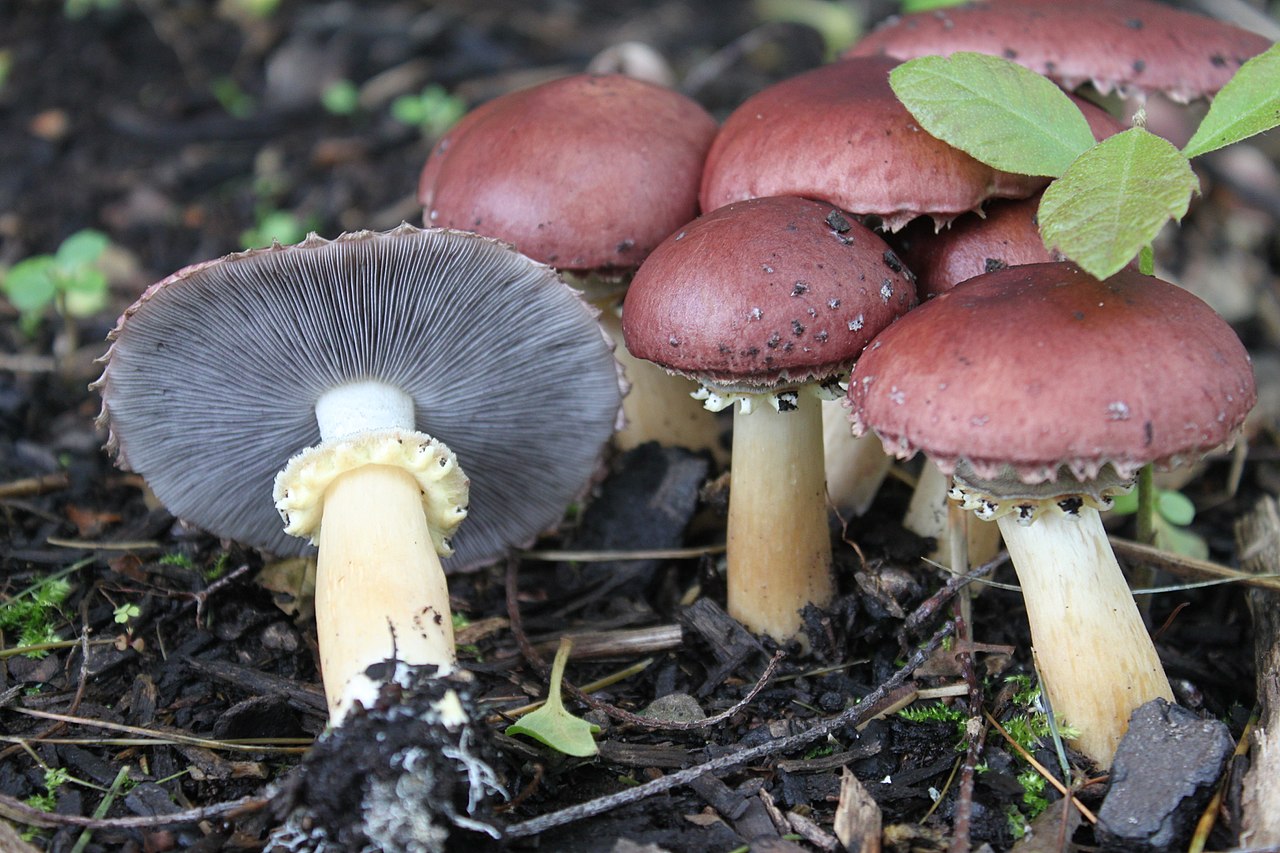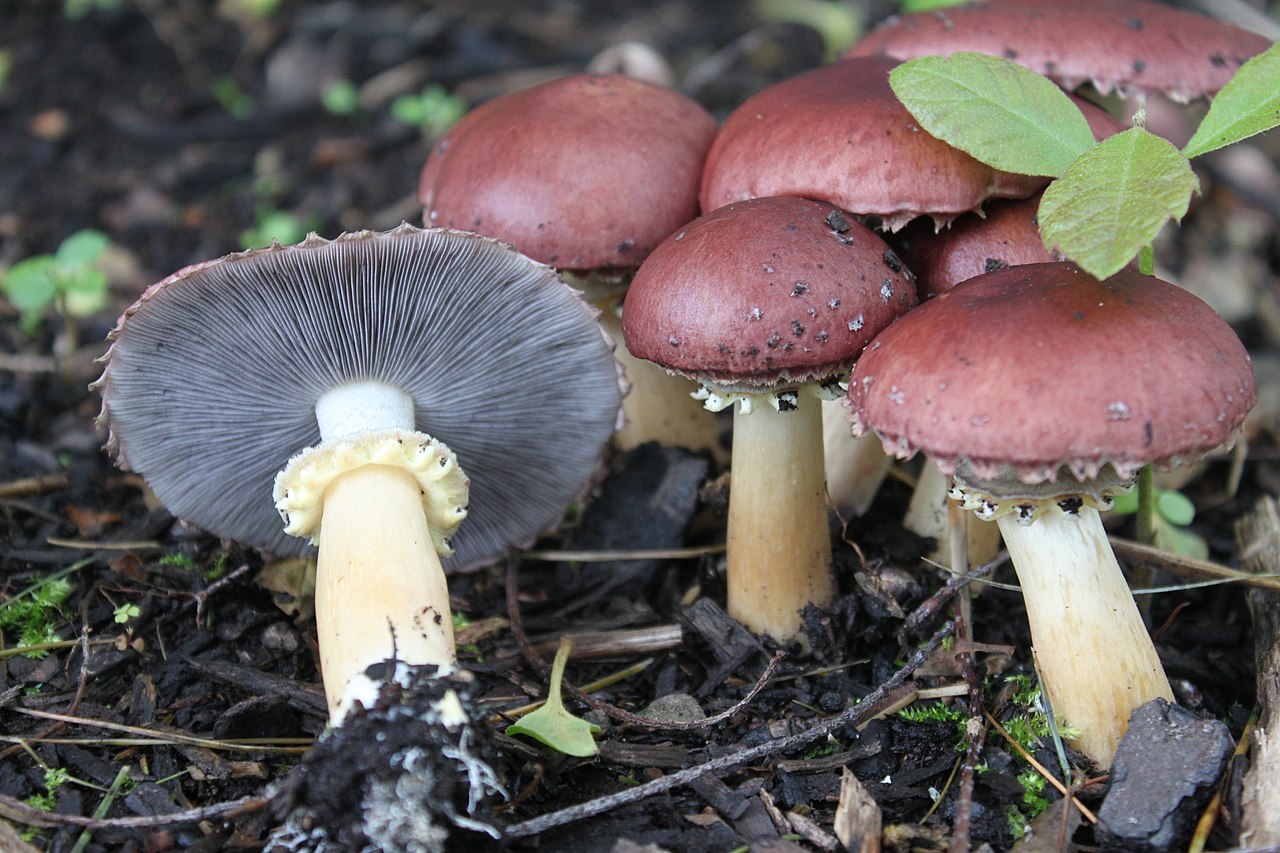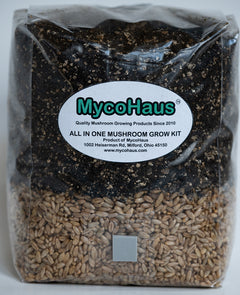The Wine Cap Mushroom has many names, each highlighting a unique feature. One common name is King Stropharia, given its majestic appearance and impressive size compared to other mushrooms.
This article explores the mushroom's names, characteristics, uses in cooking, and how to grow it in your garden.

Introduction
The Wine Cap Mushroom, also known as Stropharia rugosoannulata, is a unique fungus. People admire its appearance and versatility in various culinary preparations.
People call this mushroom King Stropharia, Garden Giant, and even "Godzilla Mushroom." It is popular among mushroom lovers and chefs.
The Many Names of King Stropharia
The Wine Cap Mushroom goes by several monikers, each reflecting a different aspect of its character. People often name it the King Stropharia due to its grand appearance and sizable stature, which can match many other mushrooms.
Garden Giant earns another apt name, as it often flourishes in gardens and woodchip beds.
The whimsical Godzilla Mushroom name hints at its impressive size, making it seem like something out of a monster movie. No matter what you call it, this mushroom is a star in its own right.
Appearance and Identification
King Stropharia are characterized by their large, burgundy-brown caps that can grow up to 10 inches in diameter. The larger this mushroom grows, the more brown-tan the cap becomes.
Habitat and Range
These versatile mushrooms are found across North America and Europe. They have a particular affinity for wood chips, making gardens a common habitat.
Garden Giant Mushrooms are also known to colonize mulch beds and forested areas. Their ability to thrive in various environments makes them excellent candidates for cultivation.
Cultivation
Outdoor Cultivation
Cultivating King Stropharia in your garden is an exciting endeavor. Start by preparing a bed of wood chips or straw, then introduce King Stropharia spawn.
Keep the bed moist, and in a few weeks to a few months, you'll see the mushrooms sprout. It's a rewarding way to enjoy these delectable fungi in your own backyard.
Indoor Cultivation
For those without garden space, indoor cultivation is possible. Use an all-in-one mushroom grow kit and inoculate it with one of our King Stropharia liquid cultures.
Keep in mind that King Stropharia is a secondary decomposing fungus that will require a casing layer to initiate the fruiting process.
With patience and care, you can harvest fresh Wine Cap Mushrooms indoors.
Culinary Delights
Wine Cap Mushrooms are prized for their rich, earthy flavor and meaty texture. They can be used in various dishes, from sautés and stews to risottos and quiches.
Their umami-packed profile makes them a favorite among chefs and food enthusiasts alike.
Health Benefits
Beyond their delicious taste, King Stropharia offer several health benefits. They are a good source of protein, fiber, and essential vitamins and minerals.
These mushrooms also contain antioxidants and compounds that may boost the immune system.
Harvesting King Stropharia Mushrooms
Knowing when to harvest Wine Cap Mushrooms is crucial for their flavor and texture. Harvest them when the caps are still convex and not yet fully opened. Simply twist and pull to remove them from the substrate.
Storing and Preserving
To enjoy Wine Cap Mushrooms for an extended period, store them in a paper bag in the refrigerator. They can also be dried for later use in soups and sauces.
Wine Cap Mushroom Recipes
- King Stropharia Risotto with White Wine, Parsley & Roasted Ancho Chiles
- Wine Cap Stropharia Mushrooms with Butter, Soy Sauce and Gochujang (YouTube)
- Grilled Wine Cap Mushrooms with Herb Sauce
Cautions and Safety
While Wine Cap Mushrooms are generally safe to eat, it's essential to properly identify them to avoid any toxic look-alikes. If you have any doubts about a mushroom's identification, consult an expert.
Environmental Benefits
Beyond their culinary and cultural significance, Wine Cap Mushrooms also offer environmental benefits. They help break down organic matter and improve soil quality, making them valuable allies in sustainable gardening and agriculture.
Conclusion
The Wine Cap Mushroom, with its various names and versatile nature, has found its way into our gardens, kitchens, and folklore.
Whether you're a mushroom enthusiast or a culinary adventurer, exploring the world of King Stropharia is a rewarding journey. From cultivation to mouthwatering recipes, this mushroom offers a world of possibilities.
FAQs
-
Are Wine Cap Mushrooms safe to eat?
- Yes, Wine Cap Mushrooms are safe to eat, but proper identification is crucial to avoid toxic look-alikes.
-
Can I cultivate Wine Cap Mushrooms indoors?
- Yes, you can cultivate Wine Cap Mushrooms indoors with the right conditions and care.
-
What is the best way to store Wine Cap Mushrooms?
- Store Wine Cap Mushrooms in a paper bag in the refrigerator or dry them for later use.
-
Are there any health benefits associated with Wine Cap Mushrooms?
- Yes, Wine Cap Mushrooms are a good source of protein, fiber, vitamins, minerals, and antioxidants.
-
What is the origin of the name "Godzilla Mushroom"?
- The name "Godzilla Mushroom" likely stems from the mushroom's impressive size, reminiscent of the famous movie monster.




Leave a comment